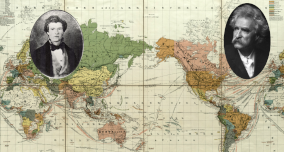The Hudson River area was originally inhabited by Algonquian-speaking Mohican (Mahican), who called it Pempotowwuthut-Muhhcanneuw.[7] The area was settled by Dutch colonists who, in 1614, built Fort Nassau for fur trading and, in 1624, built Fort Orange. In 1664, the English took over the Dutch settlements, renaming the city Albany in honor of the Duke of Albany, the future James II of England and Ireland/James VII of Scotland. The city was officially chartered in 1686 under English rule. It became the capital of New York in 1797 after the formation of the United States. Albany is one of the oldest surviving settlements of the original British thirteen colonies; no other city in the United States has been continuously chartered as long.[8]
In the late 18th century and throughout most of the 19th, Albany was a center of trade and transportation. The city lies toward the north end of the navigable Hudson River; was the original eastern terminus of the Erie Canal, connecting to the Great Lakes; and was home to some of the earliest railroads in the world.
Twain lectured at Tweddle Hall, January 10, 1870 and November 28, 1871.
August 24, 1885, Sam and Livy visited the home of Dean Sage, about three miles from Albany. Also, February 11, 1889.
December 2, 1884, it is noted that in the office of then Governor and President-elect Grover Cleveland "..I sat down on four electrical bells at once (as the cats used to do at the farm,) & summoned four pages whom nobody had any use for..."
Sam spent the night of December 10, 1868 at the Delevan House.
See Mark Twain and Albany in Friends of Albany History
